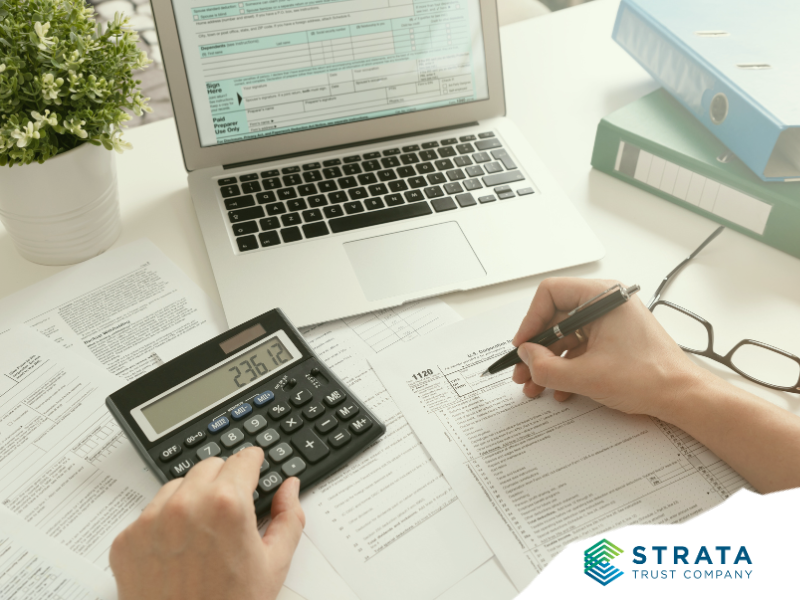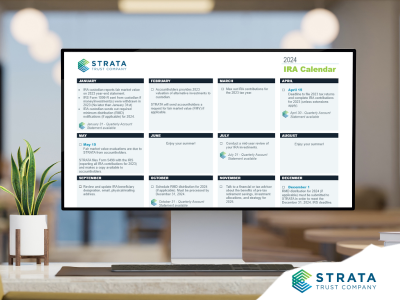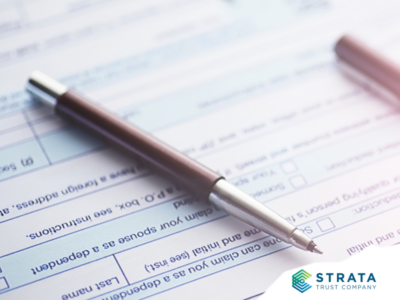Self-directed IRAs (SDIRAs) can offer incredible benefits. With Traditional IRAs, contributions may be deductible, and investment growth is tax deferred until the assets are distributed—and with Roth IRAs, qualified distributions can be completely tax-free. However, certain SDIRA investments can create unexpected tax consequences. Some investments create income taxed in the year it arises, rather than being deferred until you take a withdrawal.
There are two types of taxable income that SDIRA owners should know about: Unrelated Business Taxable Income (UBTI) and Unrelated Debt-Financed Income (UDFI). Ultimately, self-directed IRA account owners are responsible for filing and calculating these taxes.
SDIRA custodians—STRATA included—do not review, advise on, or calculate UBTI/UDFI—this should be done by a competent tax professional. The details can be nuanced and sometimes tricky, but if you know the concepts, you will be better equipped to ask the right questions and seek the right professional advice in order to handle any tax implications that such investments may trigger.
When Would UBTI Apply?
The special tax treatment that tax-favored entities receive could give them an unfair boost over “normal” businesses that don’t receive the same tax advantages. To level the playing field, tax-advantaged entities such as not-for-profit organizations and IRAs must pay income tax derived from a trade or business conducted by the entity.
| UBTI | For example, you purchase a confection kiosk at the local mall with your Roth IRA assets. As an entity with a tax advantage (tax-deferred or tax-free growth), your IRA would have a leg up on competitors, whose businesses pay tax on profits as they are earned. Therefore, the tax code requires entities that operate a business not substantially related to their organization’s tax-exempt status to pay tax on this business’s annual income. |
The primary purpose of an IRA is to generate investment income for the IRA owner’s retirement. It is not to create or maintain a business that exists for a different purpose—but there may be some overlap. For example, a real estate investment trust (REIT) may invest primarily in commercial real estate, which may seem like it could create UBTI for its investors. But, as a special category of investment vehicle, REITs will not create UBTI. The same applies to investments structured as hedge funds, promissory notes, and certain other private corporations. To be sure, SDIRA investors should know about any UBTI implications before they invest their IRA assets in a business.
When Would UDFI Apply?
Real estate is a popular SDIRA investment, and the benefits from a well-managed property can be exceptional. For instance, if an SDIRA buys a rental property with cash, not only does the SDIRA owner benefit from any increase in the fair market value of the property, but the IRA also normally receives the rents as increases to the overall value of the IRA. In the Roth IRA context, rents received are potentially tax-free earnings, assuming that any distributions are considered “qualified.”
However, there is an exception for real estate purchased with a loan. Such “leveraged” property can create UDFI. The rules can get complicated, but the essence is this: income generated by an IRA property acquired through debt is subject to taxation in the proportion that the debt bears to the total value of the property. Again, this rule attempts to level the playing field by discouraging tax-advantaged accounts (like IRAs) to engage in highly leveraged transactions in order to gain even greater tax benefits—benefits that other types of accounts don’t have.
| UDFI | For example, your IRA buys a $500,000 rental property with $250,000 in cash and a $250,00 loan. Because 50% of the property is debt-financed, any rents received by the IRA are considered UDFI) and are taxed if they exceed $1,000. So, if your IRA collects $20,000 in rent for the year, $10,000 is subject to taxation. |
What Should Be Filed With the IRS?
Those who own a business in their IRA or have debt-financed income must normally file IRS Form 990-T, Exempt Organization Business Income Tax Return, to report income of more than $1,000. Any tax that is owed by the IRA must be paid out of the IRA’s assets and not paid by the IRA owner directly.
Investors who owe UBTI should receive a Schedule K-1 from your investment sponsor. Schedule K-1s are prepared by your investment sponsor and sent directly to the investor and the IRS (not to the IRA custodian). To avoid IRS confusion between your IRA income and personal income, it is important to verify the K-1 document reflects the IRA’s tax identification number (TIN). Obtaining a TIN for an IRA is an easy process; if you do not have a TIN for your IRA, you must apply for one before filing Form 990-T. The IRA is a separate legal entity with its own tax obligation. Using the IRA owner’s SSN or your custodian’s EIN will cause confusion for the IRS and could create a red flag for further IRS scrutiny.
Additional Information
This discussion (and simple examples) is not meant to convey the subtleties of UBTI and UDFI tax principles. The details should be left to your qualified tax professional. Self-directing your IRA assets can result in impressive retirement savings, but there are requirements that may surprise you—and that could trip you up if you’re not prepared.
For more information on taxable investment income and IRS Form 990-T, visit the Investment Income and Taxes section of our SDIRA Knowledge Center. You can also find more details on UBTI and UDFI in our informative quick guide.










